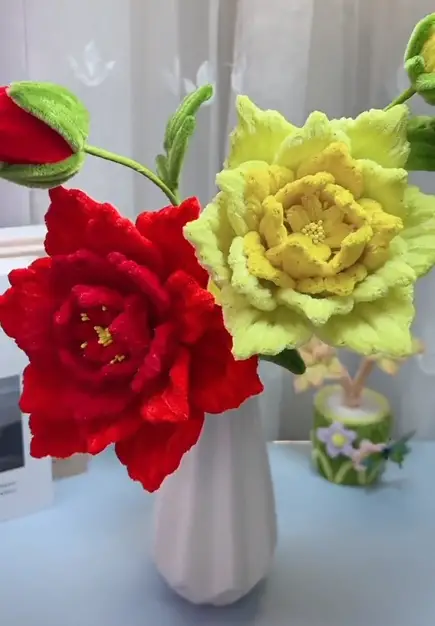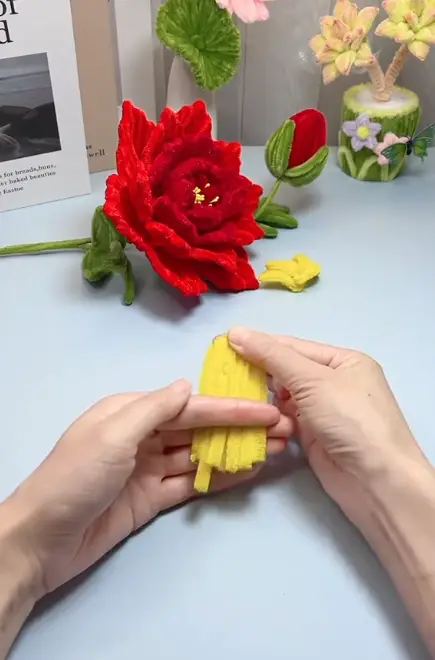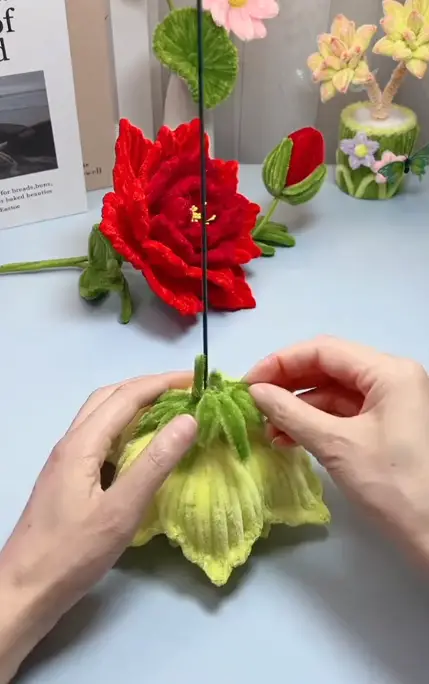🌟 Hurry – this special offer won’t last forever! Don’t miss the chance to save big and make your DIY dreams a reality. Click here to start your journey: https://temu.to/k/u7t97s4h9c3 🛍️
In a world increasingly dominated by technology, the charm of handmade crafts continues to captivate both creators and admirers. The DIY pipe cleaner flower, a deceptively simple yet elegant craft, exemplifies this allure. With its blend of vibrant pipe cleaners and sparkling acrylic beads, it invites beginners and seasoned crafters alike to channel their creativity into something meaningful. This project is more than a mere pastime; it embodies a resurgence of traditional artistry in a modern age.
Pipe cleaner flowers are not just a craft—they are a statement of resourcefulness and creativity. Celebrities such as Drew Barrymore, known for her love of DIY projects and artisanal crafts, often advocate for the therapeutic benefits of crafting. Similarly, crafting influencers like Lauren Conrad have popularized handmade creations, showcasing how simple materials can yield breathtaking results. Pipe cleaner flowers align perfectly with this trend, offering a low-cost yet highly rewarding activity that resonates across generations.

The process of crafting these flowers is inherently inclusive, designed to engage everyone from children to adults. Pipe cleaners, a staple in craft stores, come in a dazzling array of colors and textures, enabling endless customization. Adding acrylic beads elevates the design, transforming a basic craft into a miniature work of art. For moms seeking bonding activities with their children, or individuals looking for a creative outlet, this craft is a perfect fit.
Creating pipe cleaner flowers begins with selecting the right materials. Choose pipe cleaners in vibrant shades to mimic the hues of real flowers. For instance, a combination of soft pinks and yellows can emulate daisies, while rich purples and greens evoke the elegance of lavender. Acrylic beads serve as the centerpiece, adding depth and sparkle. The juxtaposition of soft pipe cleaners and glossy beads creates a visual and tactile contrast that is both engaging and satisfying.

Once the materials are gathered, the process unfolds as a delightful exercise in craftsmanship. Each pipe cleaner can be twisted and shaped to form petals, with beads strung along to enhance their charm. Assembling these elements together requires precision but allows for improvisation, making every creation unique. This adaptability mirrors the ethos of DIY culture, where individual expression reigns supreme.
The rise of DIY crafts in mainstream culture underscores a collective yearning for authenticity and mindfulness. In an era of mass production, handmade items stand out as symbols of care and effort. Pipe cleaner flowers tap into this sentiment, offering a quick yet impactful way to create something beautiful. The craft has even found a niche in events like weddings, where personalized handmade decorations are in vogue. Couples looking to infuse their celebrations with personal touches can use these flowers as table centerpieces, boutonnieres, or even wedding favors.
On a societal level, crafts like pipe cleaner flowers play a significant role in promoting mental well-being. Research has shown that engaging in hands-on activities reduces stress and boosts mood, making it an effective form of therapy. Crafting also fosters a sense of accomplishment, as tangible results emerge from a few simple materials. This resonates particularly well in the fast-paced digital world, where the tactile pleasure of creating something real offers a refreshing break.
Pipe cleaner flowers also tie into larger trends in sustainable living. The materials used are minimal and often repurposable, aligning with the eco-conscious mindset of today’s consumers. Furthermore, the flowers can be reused in various ways, from home decor to gifts, reducing waste and encouraging thoughtful consumption. This sustainable aspect makes the craft appealing not only to individuals but also to organizations and schools promoting green initiatives.

The simplicity of pipe cleaner flowers belies their versatility. Beyond personal enjoyment, these crafts have found their way into classrooms, where teachers use them to introduce concepts like color theory and geometry. They also serve as therapeutic tools in occupational therapy, helping individuals improve their motor skills and cognitive abilities. In this way, pipe cleaner flowers transcend the boundaries of art, becoming a conduit for education and healing.
Influencers and social media platforms have played a crucial role in popularizing crafts like pipe cleaner flowers. Pinterest boards and Instagram reels abound with tutorials, inspiring millions to try their hand at this charming craft. The accessibility of these platforms ensures that even novice crafters can follow along, bridging the gap between aspiration and creation. Hashtags such as #DIYFlowers and #PipeCleanerArt bring communities together, fostering a sense of belonging among enthusiasts worldwide.

The impact of crafting on contemporary culture is undeniable. It reflects a collective shift toward valuing the handmade, the sustainable, and the personal. Pipe cleaner flowers, with their whimsical beauty and ease of creation, are emblematic of this movement. They remind us that creativity need not be complex or expensive; it thrives in simplicity and intention.
In the end, a DIY pipe cleaner flower is more than a decorative piece. It is a celebration of creativity, a nod to tradition, and a step toward a more mindful existence. Whether crafted for a special occasion or as a spontaneous project, these flowers hold the power to brighten spaces and uplift spirits. For moms, beginners, and seasoned crafters alike, they offer an invitation to pause, create, and connect with the timeless joy of making something by hand.





